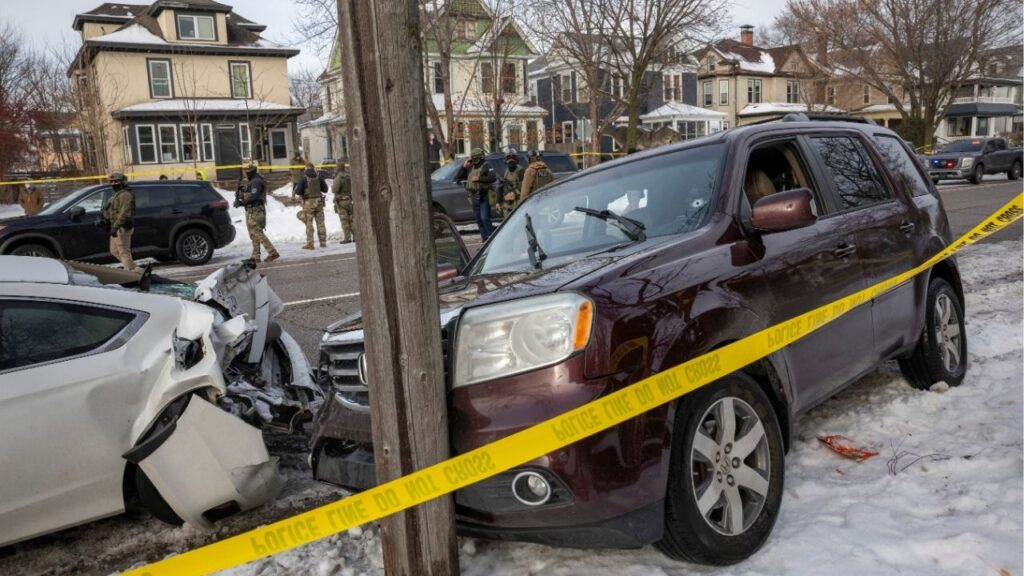Share
SEOUL, South Korea — The coronavirus appeared for the first time in New York, Moscow and Berlin and clusters of the disease surged around the world, even as new cases in China dropped to their lowest level in six weeks Monday and hundreds of patients were released from hospitals at the epicenter of the outbreak.
But the organization’s chief of emergencies pointed out that even regions that have taken less aggressive measures than the extraordinary lockdowns implemented by China have managed to keep the virus in check.
Dr. Mike Ryan said that because COVID-19 is not as easily transmitted as the flu, “it offers us a glimmer … that this virus can be suppressed and contained.”
Amid the good-news, bad-news developments, the global death toll pushed past 3,000, and the number of people infected topped 89,000, with fast-expanding outbreaks in South Korea, Italy and Iran.
Around the world, the virus reshaped people’s routines, both at home and at work, from the millions of Japanese schoolchildren facing four weeks without class to special voting booths for Israelis under quarantine. Mobile hospitals were planned in Iran, and the “Mona Lisa” hung in a vacant room of the shuttered Louvre in Paris.
The Organization for Economic Cooperation and Development warned that the world economy could contract this quarter for the first time since the international financial crisis more than a decade ago.
“Global economic prospects remain subdued and very uncertain,” the agency said.

Monday Brought Positive Signs From China
Wall Street nonetheless opened higher after the worst week for stocks since the 2008 crisis.
In the United States, the number of cases climbed to at least 91, and the country recorded its second death, both of them in Washington state. Health officials said the latest victim was a man in his 70s from a nursing facility near Seattle, in a region where researchers believe the virus may have been circulating for weeks undetected.
In densely populated New York City, a health care worker who had returned from Iran was in quarantine at home, according to New York Gov. Andrew Cuomo. He said the city is ramping up preparations and cautioned against panic. The virus has reached at least 10 states, according to the U.S. Centers for Disease Control and Prevention.
“The fear, in my opinion, is outpacing reason at this point,” Cuomo told “CBS This Morning.”
Malaysia and Portugal were among the newest places to detect the virus. More than 60 countries — including nine of the 10 most populous — have reported infections.
Even as alarms grew louder in much of the world, Monday brought positive signs from China, where the outbreak started two months ago. China reported 202 new cases of the virus, its lowest daily count since Jan. 21, and the city at the heart of the crisis, Wuhan, said 2,570 patients were released.
At the largest of 16 temporary hospitals that were rapidly built in Wuhan in response to the outbreak, worries over the availability of supplies and protective gear eased, along with the pressure on the medical staff.
Dr. Zhang Junjian, who leads a temporary hospital in Wuhan with a staff of 1,260, said optimism is high that the facility will no longer be needed in the coming weeks.
Hospitals Will Be Reserved for Patients With Serious Symptoms
“If nothing special happens, I expect the operation of our makeshift hospital … could complete its historical mission by the end of March,” Zhang said.
But in other places, problems continued to multiply.
“Just about everywhere, the cases are rising quite quickly in a number of countries,” said Ian Mackey, who studies viruses at the University of Queensland in Australia.
South Korea, with the worst outbreak outside of China, said it recorded 599 new cases Monday, bringing the total to 4,335. The death toll rose to 26.
To cope, the country said hospitals will be reserved for patients with serious symptoms or preexisting conditions, with mild cases now routed to other designated facilities.
“If we continue to hospitalize mild patients amid the continued surge in infections, we would be risking overworking medical professionals and putting them at greater risk of infections,” said the country’s vice health minister, Kim Gang-lip.
South Korea extended the shutdown of its schools two more weeks to March 23. And the leader of a church that has blamed for being the source of the country’s largest cluster of infections bowed in apology.
“We also did our best but weren’t able to contain it fully,” said Lee Man-hee, the 88-year-old leader of the Shincheonji church, which some mainstream Christian groups reject as a cult.
In the Middle East, a worsening situation in Iran was accompanied by concern for its top leaders after a member of the council that advises the Islamic republic’s supreme leader died of COVID-19. Iran has confirmed 1,501 cases and 66 deaths, but many believe the true number is larger. Its caseload surged more than 250% in just 24 hours.

Japan Closed Schools for Most of the Country’s 12.7 Million Children
Major Shiite shrines in Iran remain open despite civilian authorities’ calls to close them. The holy cities of Mashad and Qom, where Shiites often touch and kiss shrines in a show of faith, have had high numbers of infections. The Revolutionary Guard said it will install some mobile hospitals in response, and authorities have been cleaning the shrines and spraying down streets with disinfectant.
In Europe, leaders braced for worsening caseloads after the count surged in France, Italy and to a lesser degree Spain over the weekend. Italy’s infections ballooned 50% in 24 hours to 1,694. Health officials in northern Italy sought to bring doctors out of retirement and accelerate nursing students’ graduations to help an overwhelmed public health system.
The Louvre, the world’s most popular museum, remained closed as its 2,300 workers expressed fears of contracting the virus from visitors arriving from all over the world. At Fashion Week in Paris, attendees greeted each other with elbow touches instead of kisses. In Germany, Chancellor Angela Merkel’s outstretched hand was rebuffed by her interior minister at a meeting.
Japan closed schools for most of the country’s 12.7 million children until the end of the month, creating difficulties for some families.
Mika Nakajima, a museum employee and single mother with a 15-year-old autistic son, said she has already used up her paid vacation days to take care of her aging parents and her son and fears losing her job.
“It’s a difficult time for families with ordinary children, but it’s much harder for those who have children with disabilities or who need attention and care,” Nakajima said. “Some other forms of support are needed.”
[activecampaign form=29]
RELATED TOPICS:
Categories

By Killing Renee Good, ICE Sent a Message to Us All

Healthcare Subsidy Renewal Heads to Passage in US House

















